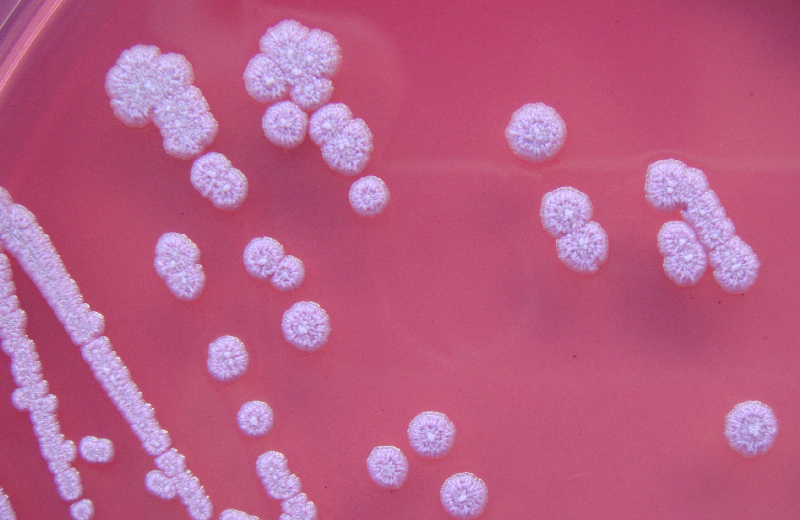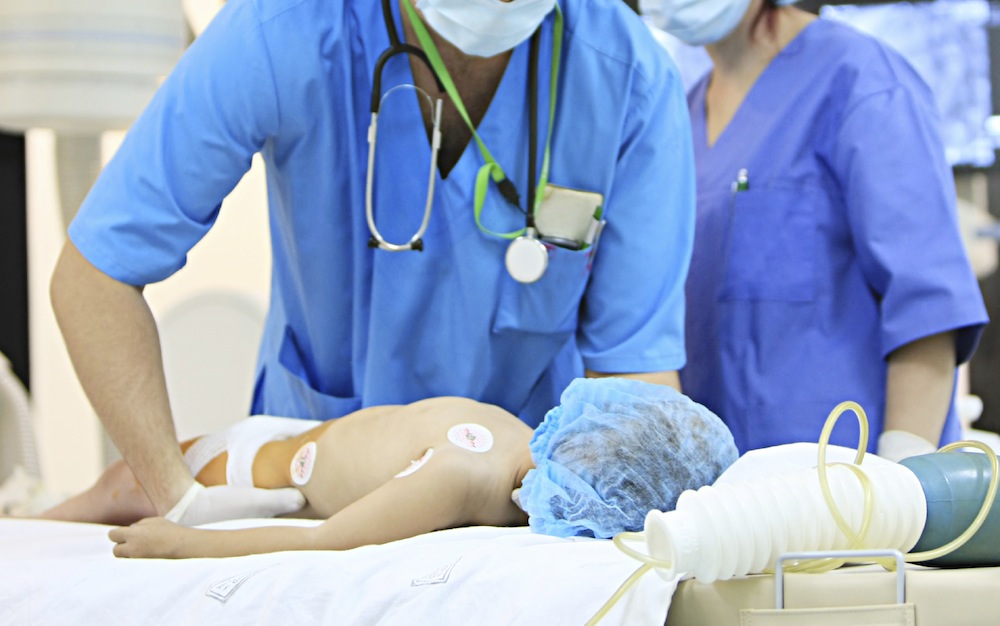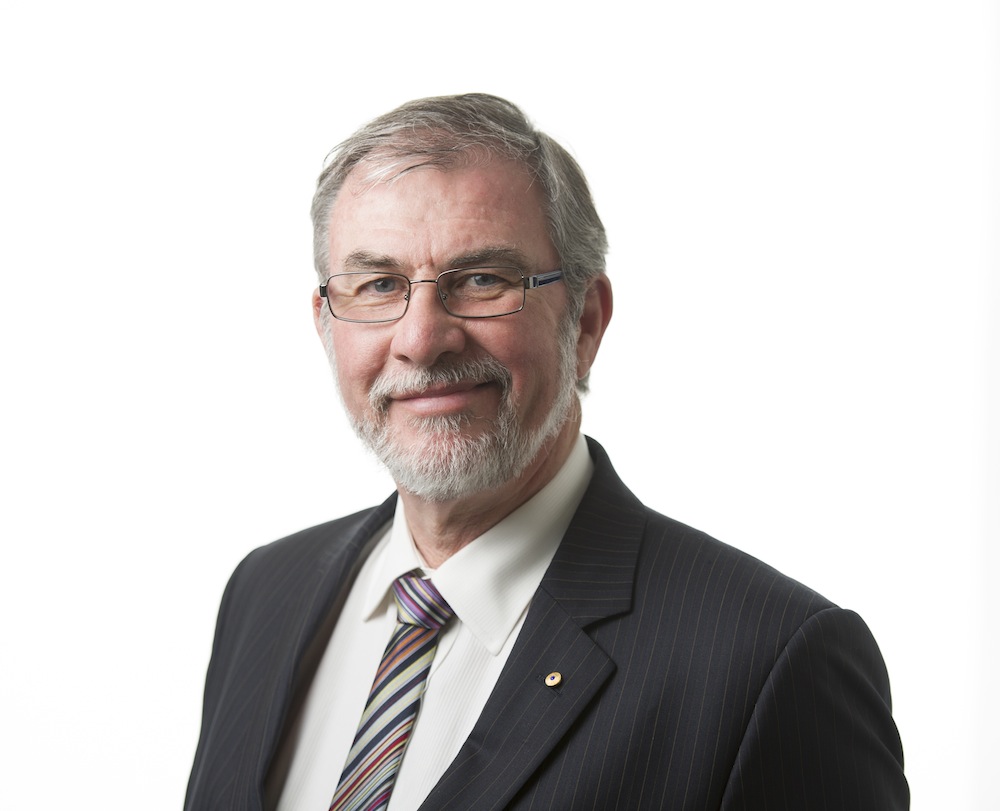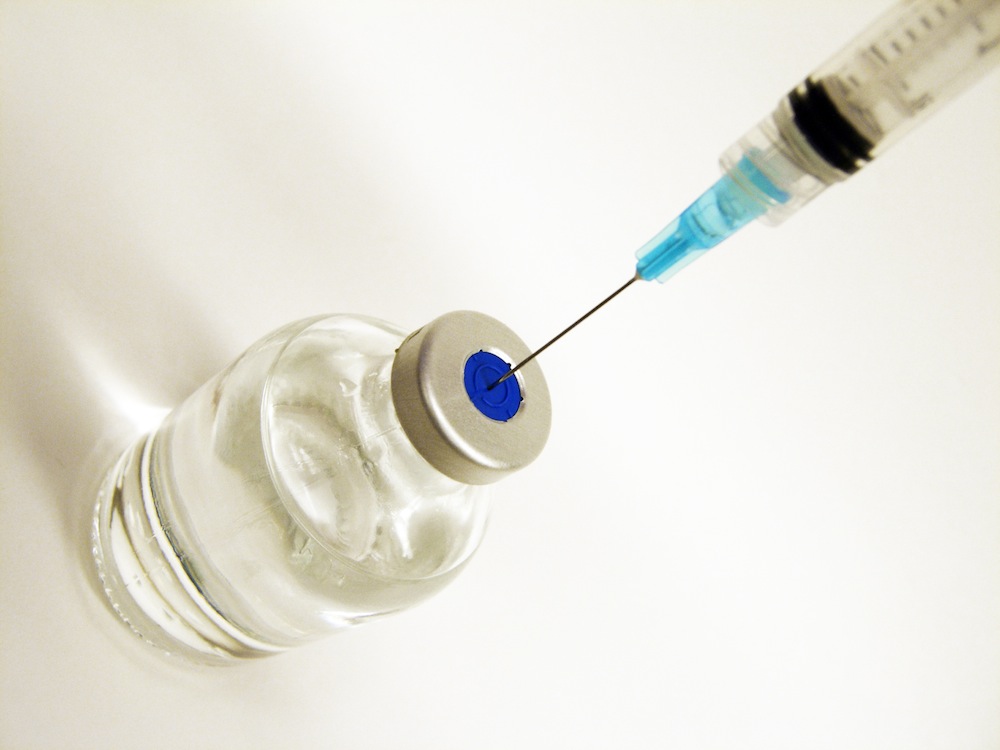Melioidosis is an infection of concern to global health. It is caused by the intracellular gram-negative bacterium Burkholderia pseudomallei, which is found in the soil and fresh waters of endemic regions. This study identified the average annual incidence of melioidosis in the Torres Strait region between 2001-2012, and compared this to one other similar study, which identified the average annual incidence between 1995-2000. Patient demographics, clinical presentation, outcomes and risk factors were compared to other available studies. In this retrospective study of melioidosis in the Torres Strait, 31 cases were identified over an 11-year period, representing an annual incidence of 37 cases per 100,0000 population. Of these cases, 84% recovered, 16% required intensive care unit (ICU) admission, 3% had a relapse and two patient deaths occurred. The mortality rate was 6.4%. Pneumonia accounted for fifteen presentations (48%) and splenic abscesses for ten presentations (32%), with nine patients presenting with septic arthritis of a joint (29%). Other presentations included hepatic (19%), prostatic (19%), renal (10%), skin (6%), pancreatic (3%), scrotal (3%) and spinal abscesses (3%). Four presented with bacteraemia alone (13%) and one case presented with urethritis (3%). Risk factors included diabetes mellitus (68%), excessive alcohol intake (35%), renal disease (12%), autoimmune disease (6%), malignancy (4%) and the use of immunosuppressive medication (2%).
Introduction
Melioidosis is an infection caused by the intracellular gram-negative bacterium Burkholderia pseudomallei, which is found in the soil and fresh waters of endemic regions. [1] Endemic regions include Southeast Asia and Northern Australia, with peaks of infection occurring during the wet seasons. [2] Melioidosis is of global public health significance, and may be thought of as an emerging infection across tropical regions. [3]
The Torres Strait is a tropical region comprised of 274 islands between the Cape York Peninsula of mainland Australia and Papua New Guinea (PNG). According to the 2006 Australian Bureau of Statistics (ABS) census data, the region has a total population of 7,624, with 82.5% identifying as Indigenous. [4] Half of this population is clustered within the central island group located closest to Thursday Island (TI), which is the commercial and governmental centre of the region. Hospital services are also centralised at TI, however, the closest tertiary referral centre for the Torres Strait region is the Cairns Base Hospital, located 800km south of TI.
 Melioidosis is endemic in the Torres Strait, with the most recent average annual incidence reported to be 42.7 cases per 100,000. [5] This is significantly greater than other centres such as Darwin, where the annual incidence was noted to be 19.6 cases per 100,000 between 1986 and 2008. [6] However, during periods of extreme climate, such as during years of significant heavy rainfall, this incidence dramatically increases. This was observed in Darwin between 2009 and 2010, during which the annual incidence increased to 50.2 cases per 100,000, as a result of a heavy wet season. [7] The variability in annual incidence highlights the significant relationship between the transmission of melioidosis and certain environmental factors, such as rainfall level. [1,2]
Melioidosis is endemic in the Torres Strait, with the most recent average annual incidence reported to be 42.7 cases per 100,000. [5] This is significantly greater than other centres such as Darwin, where the annual incidence was noted to be 19.6 cases per 100,000 between 1986 and 2008. [6] However, during periods of extreme climate, such as during years of significant heavy rainfall, this incidence dramatically increases. This was observed in Darwin between 2009 and 2010, during which the annual incidence increased to 50.2 cases per 100,000, as a result of a heavy wet season. [7] The variability in annual incidence highlights the significant relationship between the transmission of melioidosis and certain environmental factors, such as rainfall level. [1,2]
The transmission of melioidosis most commonly occurs through percutaneous inoculation, and less commonly through inhalation, aspiration and ingestion. [2] A range of host and environmental factors must also exist for an individual to be infected. This includes reduced host immunity and the significant environmental exposure to the pathogen which occurs in endemic regions. [1] This was demonstrated in the study by Kanaphun et al. conducted in northeast Thailand, in which serological studies of 80% of the population exhibited positivity for antibodies against B. pseudomallei by four years of age. [18] There is clear significant environmental exposure in populations of northeast Thailand, yet only 20% of these children developed a symptomatic infection. [1,18] In addition, of the adults infected with symptomatic melioidosis, over 80% displayed reduced host immunity, with most affected by diabetes mellitus or renal failure. [8] In comparison, studies conducted in Australia demonstrated that most individuals were affected by excessive alcohol consumption and diabetes mellitus. [9]
The clinical syndrome associated with the infection of B. pseudomallei is diverse and can affect a variety of organs. Both domestic and international literature overwhelmingly demonstrated the lung as the most commonly affected organ, with pneumonia being the most common clinical presentation of melioidosis. [7,9] Other clinical presentations include symptoms of septicaemia such as fever, malaise, pain in the joints or abdomen, which may be the result of abscess formation in the liver, prostate, kidney, skin or pancreas.
The incubation period varies, as B. pseudomallei can remain dormant for a prolonged period of time. This makes it difficult to establish the exact period of infection. In most cases, a diagnosis of melioidosis is made through positive cultures demonstrating the growth of B. pseudomallei. Serological evidence can also be used to demonstrate past infections, or the presence of rising titres can provide a diagnosis in the absence of positive cultures. [2]
Recurrence of melioidosis can occur in 15% of individuals within ten years of the primary infection, with 50% of these occurring within the first twelve months. [10] Overall, 25% of individuals with recurrence will die. [10] Risk factors for recurrence include severity of initial infection, treatment regime and compliance, and short treatment duration. [10]
Within Australia, it was noted that the mortality rate was similar across the Torres Strait, North Queensland and Darwin. The most recent study conducted in the Torres Strait demonstrated a 22% mortality rate, [5] whilst a larger study in Darwin exhibited a similar mortality rate of 19%. [6,9]
The literature demonstrates the importance of melioidosis to the Torres Strait region. Its seasonal, wet, tropical location and its burden of chronic disease make it a prime location for B. pseudomallei. Furthermore, the most recent examination of this condition in the area is ten years old, highlighting the need for more recent data. This study aims to retrospectively examine all melioidosis cases between the year 2001 and 2012, in order to understand the current burden, risk factors and disease pattern of melioidosis in the Torres Strait.
Methods
This study aimed to conduct a retrospective audit of all patient data between 2001 and 2012, with diagnosis of melioidosis confirmed by isolation of B. pseudomallei. Patients who had been coded as having a diagnosis of a melioidosis infection within this period were identified. All patients who had a positive culture or serology for melioidosis were identified through Queensland Health Pathology. Electronic records were accessed for confirmation of diagnosis and to collect patient medical history, social history and medication lists. Electronic data was accessed through the Queensland Health Electronic Discharge Summary (EDS) program and via clinical notes in Best Practice. AusCare was accessed to confirm positive blood or swab cultures.
Positive serological diagnoses without supporting positive cultures were excluded. Patients with negative pus or blood cultures were excluded. Patient records were de-identified and analysed for demographical data, risk factors, clinical presentation and outcomes. All cases identified were acquired within the Torres Strait region.
Patient transfer to a tertiary hospital for further management and treatment did not result in exclusion of the patient. Once stabilisation was achieved in tertiary centres, patients returned to the TI Hospital to complete treatment, and were not listed as an additional case in the study.
Annual incidence rates were calculated using the 2006 ABS population census data of the Torres Strait region. [4] Recognised risk factors for melioidosis were utilised to aid in analysis of patient records. Data were compared to previous studies from both the Torres Strait and other similar regions within Australia, to determine similarities and differences across these areas.
Patient occupational data was not included in this study, as they were not reflective of environments which would cause significant increased exposure to B. pseudomallei.
Results
Melioidosis was confirmed in 31 cases by isolation of B. pseudomallei from any clinical sample. Of the 31 cases, 28 cases were confirmed by blood culture and two cases were confirmed by swab culture of pus, one from a septic ankle and the other from an epidural abscess. These two cases did not culture B. pseudomallei in serological samples. This represented an average annual incidence of 37 cases per 100,000 of melioidosis within the Torres Strait region.
The majority of individuals affected were male (65%), of Torres Strait Islander decent (Figure 1), with a median age of distribution between 40-49 years (Figure 2). Most patients presented from outer islands (71%), in particular Badu Island. Ninety percent of presentations occurred during the wet season months of the Torres Strait, between January and May.
Many patients had more than one risk factor, and diabetes mellitus was by far the most common, present in 21 cases (68%). Excess ethanol intake (35%) and renal disease (12%) were also identified as significant risk factors in this study. Autoimmune disease (6%), malignancy (4%) and the use of immunosuppressive medication (2%) were considered minor risk factors (Figure 3). Significant risk factors were defined as those that represented a higher percentage in the population as extrapolated from data. Obesity, heart disease and COPD were not identified as significant risk factors in this study.
Of all cases, pneumonia was the most common presentation (48%), closely followed by splenic abscesses (32%) and septic arthritis of a joint (29%). Other presentations included hepatic (19%), prostatic (19%), renal (10%), skin (6%), pancreatic (3%), scrotal (3%) and spinal abscesses (3%). Four presented with bacteraemia alone (13%), and one case presented with urethritis (3%) (Figure 4).The majority of patients (84%) recovered with a total of five ICU admissions (16%), two patients had long- term disability and there were two deaths, giving a mortality rate of 6.4%. Two of the 31 cases occurred in children, one in a five-week old infant with the outcome of death, and one in a five year old child who was not of Aboriginal or Torres Strait Islander origin, who presented with pneumonia and septicaemia. One case of relapse was identified in a 30-year old male from Badu Island who was non-adherent with treatment following discharge from ICU at the Cairns Base Hospital.
Discussion
To date, this study is the largest retrospective study of melioidosis within the Torres Strait. It highlights that melioidosis continues to be a disease of significance in the region, despite a larger public profile in recent years. [3] The average annual incidence reported in this study is 37 cases per 100,000 between 2001 and 2012, less than that reported in a previous study examining 1995 to 2000, in which a total of 24 cases were reported, giving an annual incidence of 42.7 cases per 100,000. [5] The incidence of melioidosis in the Torres Strait remains one of the highest in Australia, excluding the seasonal peak in Darwin between 2009 and 2010. [6] The finding of this study is high compared to international figures, such as those reported in Thailand, where the annual incidence of melioidosis is 5.5 per 100,000. [10]
The high incidence reported here could be attributed to a number of environmental and population factors unique to the Torres Strait region. Climate is a major factor, as the Torres Strait region has very high rainfall during the seasonal wet months from December to May. [5] This reinforces the seasonal distribution of melioidosis, as 90% percent of cases identified occurred within these months. This strong association between the incidence of melioidosis and the rainfall patterns highlights an opportunity for public health intervention to be focussed on the annual wet period in the Torres Strait. In addition, melioidosis incidence was highest on TI (26%), closely followed by Badu Island (23%), which creates additional target locations for public health intervention.
In alignment with the literature, our study demonstrated an over-representation of the Indigenous population presenting with melioidosis. Out of the 31 cases, 28 identified as Indigenous (93.5%), and only three as non-Indigenous. This could be attributed to the generally poorer health status of Indigenous Australians, and the higher rates of chronic illness such as diabetes mellitus, resulting in this population being more susceptible to melioidosis infection. [11] The higher incidence of melioidosis may also be attributed to the cultural differences in the Indigenous population of the Torres Strait. This population has been anecdotally noted to rarely wear shoes, and to spend much of their time in outdoor activities such as fishing. This results in a significant higher environmental exposure to B. pseudomallei.
The incidence of diabetes mellitus within the Torres Strait is one of the highest in Australia, with one third of the population affected. [11] Diabetes mellitus is considered to be one of the most significant risk factors for melioidosis infection, both in Australia and abroad. [10] This was confirmed in this study, with 68% of the case patients identified as having type 2 diabetes mellitus. In comparison to studies in Thailand and Malaysia, 60.3% and 70.4% of their case participants, respectively, were identified as having diabetes mellitus. [12,13] Alternatively, in Darwin, a 20-year prospective melioidosis study from 1989 to 2009, which included 540 cases, identified 39% with underlying type 2 diabetes mellitus. [3] Similarly, a 10-year prospective study in northern Australia identified 37% with diabetes mellitus. [4] Other important risk factors for melioidosis identified were excessive alcohol use (35%) and renal disease (12%). These have been previously identified however alcohol use was considered to be a more significant risk factor for melioidosis in Australia, and renal disease a more significant risk factor in South East Asia. [7,10]
Melioidosis presentation in this study commonly included pneumonia, septic arthritis, and hepatic, splenic and prostatic abscesses. Of these, pneumonia was the most common form of presentation (48%), which reinforces aerosol inoculation as an important transmission route. This finding was similar to that found in numerous studies [3,4]; however, genitourinary infections (3%) were not as common in our study. Genitourinary infections represented 15% of presentations in studies conducted in northern Australia [4] and 14% of presentations in studies conducted in Darwin. [3] Further differences existed in cases presenting with bacteraemia. In our study, 13% of cases presented with bacteraemia alone, compared with 46% of cases presenting with bacteraemia in a north Australian 10-year study. [3] The mortality rate in our study was 6.4%, which was also lower than the north Australian study which reported a mortality rate of 19%. [3] International mortality rates are significantly higher than in Australia, and were reported to be 63% in a Malaysian study and 49% in a Thailand study. [10]
For future follow up and extension of this study, another similar audit would be beneficial to complete for 2012-2022. A future audit would create continuity of data, and would provide further analysis of melioid disease patterns. Melioid disease patterns may be observed to decrease in incidence as a result of increased public awareness, improved access to health care and improved infrastructure, as most of the outer islands currently consist of unpaved roads. Alternatively, the suggested effects of climate change on weather patterns and increased rainfall could lead to an increase in melioidosis incidence, due to the strong environmental links. [1,15-17]
Another type of study that would be beneficial for the Torres Strait region would be to investigate the levels of B. pseudomallei exposure patterns. This would involve environmental sampling, to determine the concentration of B. pseudomallei present in the soils, waters and grasses across different islands. [14] This data could then be cross-referenced with our study data, which identified specific islands as having a higher number of clinical cases. Environmental studies could provide and explanation for the higher incidence of melioidosis present on particular Torres Strait islands. For example, if a decreased concentration of B. pseudomallei was found in the soils, waters and grasses of Badu Island, the health status of the population may be considered as a more weighted risk factor for melioidosis relative to environmental exposure.
Finally, a cost analysis study of the financial burden of melioidosis could be completed. Our study identified that the majority of patients required long stay admissions at TI Hospital and tertiary centres, and that a significant proportion of cases (16%) required ICU stay. This financial burden of melioidosis on the public health system needs to be addressed, as it may provide further incentive to fund greater public health programs aimed at the primary prevention of melioidosis.
Acknowledgements
We acknowledge and appreciate the support and input from all the staff at the TI Hospital. We would like to particularly thank medical records and the pathology department at TI Hospital.
Conflict of interest
None declared.
Correspondence
K Rac: kathrinrac@gmail.com
[1] Wiersinga WJ, van der Poll T, White NJ, Day NP, Peacock SJ. Melioidosis: insights into the pathogenicity of Burkholderia pseudomallei. Nature Review: Microbiology 2006;4:272-282.
[2] Wiersinga WJ, Currie BJ, Peacock SJ. Melioidosis. The New England Journal of Medicine 2012; 367: 1035-1044.
[3] Dance DAB. Meliodosis as an emerging global problem. Acta Tropica 2000;74:115-119.
[4] Australian Bureau of Statistics. National regional profile: Torres Strait Islands [Internet]. 2007 [cited 2012 April 24]. Available from: http://www.censusdata.abs.gov.au
[5] Faa AG, Holt PJ. Melioidosis in the Torres Strait Islands of far North Queensland. Communicable Diseases Intelligence 2002;26:279-283.
[6] Parameswaran U, Baird RW, Ward LM, Currie BJ. Melioidosis at Royal Darwin Hospital in the big 2009-2010 wet season: comparison with the preceding 20 years. Medical Journal Australia 2012; 196(5):345-8.
[7] Currie BJ, Fisher DA, Howard DM, Burrow JN, Selvanayagam S, Snelling PL, Anstey NM, Mayo MJ. The epidemiology of melioidosis in Australia and Papua New Guinea” Acta Tropica 2000;74:121-127.
[8] Malczewski AB, Oman KM, Norton RE, Ketheesan N. Clinical presentation of Melioidosis in Queensland, Australia. Royal Society of Tropical Medicine and Hygiene 2005; 99(11):856-60.
[9] Currie BJ, Fisher DA, Howard DM, Burrow JN, Lo D, Selva-Nayagam S, Anstey NM, Huffam SE, Snelling PL, Marks PJ, Stephens DP, Lum GD, Jacups SP, Krause VL. Endemic Melioidosis in tropical northern Australia: a 10 year prospective study and review of the literature. Clinical Infectious Diseases 2000; 31:981-6.
[10] Limmathurotsakul D, Chaowagul W, Chierakul W, Stepniewska K, Maharjan B, Wuthiekanun V, Day NP, Peacock SJ. Risk Factors for Recurrent Melioidosis in Northeast Thailand. Clinical Infectious Disease 2006; 43:979-986.
[11] McDermott RA, McCulloch BG, Campbell SK, Young DM. Diabetes in the Torres Strait of Australia: Better clinical systems but significant increase in weight and other risk conditions among adults, 1999-2005. Medical Journal of Australia 2007; 186:505-508.
[12] Leelarasamee A. Meliodosis in Southeast Asia. Acta Tropica 2000; 74:129-132.
[13] Hansan DZ, Suraiya S. Clinical characteristics and outcomes of bacteraemic melioidosis in a teaching hospital in a north-eastern state of Malaysia: a five year review. Journal of Infections in Developing Countries 2010; 4(4):430-435.
[14] Currie BJ, Ward L, Cheng AC. The epidemiology and clinical spectrum of melioidosis: 540 cases from the 20 year Darwin prospective study. Neglected Tropical Diseases 2010; 30:4-11.
[15] Suppiah R, Collier MA, Kent D. Climate change projections for the Torres Strait region [Internet] 2011. [Cited 2012 April 14]. Available from: http://www.mssanz.org.au/modsim2011/F5/suppiah.pdf
[16] Costello A, Abbas M, Allen A, Ball S, Bellamy R, Friel S, Groce N, Johnson A, Kett M, Lee M, Levy C, Maslin M, McCoy D, McGuire B, Montgomery H, Napier D, Pagel C, Patel J, de Oliveira JA, Redclift N, Rees H, Rogger D, Scott J, Stephenson J, Twigg J, Wolff J, Patterson C. Managing the health effects of climate change. The Lancet 2009; 373:1693-1733.
[17] Kaestli M, Schmid M, Mayo M, Rothballer M, Harrington G, Richardson L, Hill A, Hill J, Tuanyok A, Keim P, Hartmann A, Currie BJ. Out of the ground: aerial and exotic habitats of melioidosis bacterium Burkholderia pseudomallei in grasses in Australia. Environmental Microbiology 2012; 14(8):2058-70
[18] Kanaphun P, Thirawattanasuk N, Suputtamongkol Y, Naigowit P, Dance ABD, Smith MD, White NJ. Serology and Carriage of Pseudomonas pseudomallei: A prospective Study in 1000 Hospitalized Children in Northeast Thailand. Journal of Infectious Diseases 1993; 167(1): 230-233.
Social phobia in children – risk and resilience factors





